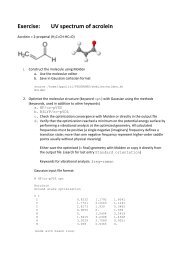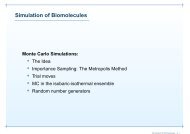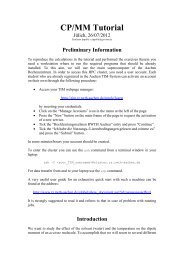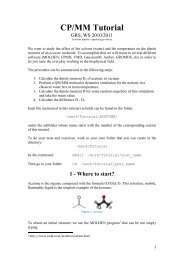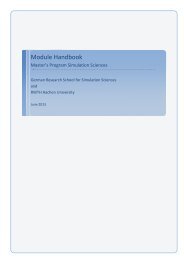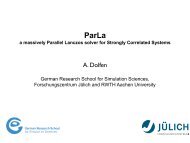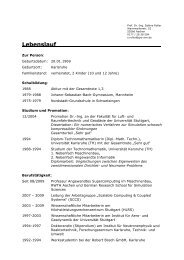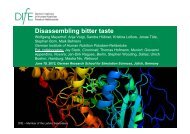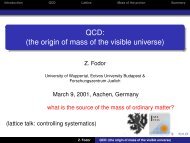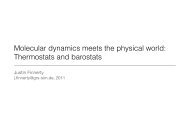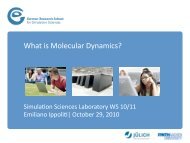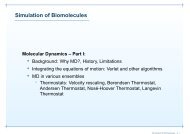Slides
Slides
Slides
Create successful ePaper yourself
Turn your PDF publications into a flip-book with our unique Google optimized e-Paper software.
QM/MM: Production<br />
• Controlling adiaba4city for CP dynamics in pra4ce <br />
– Adiaba4city: <br />
separa4on of ionic and electronic degrees of freedom <br />
• separa4ng the power spectrum of the orbital classical fields from the phonon <br />
spectrum of the ions, i.e. the gap between the lowest electronic frequency and <br />
the highest ionic frequency should be large enough <br />
• electronic frequencies depend on the fic44ous electron mass (EMASS), which <br />
can be op4mized to rise the lowest frequency appropriately (might turn out to <br />
be difficult in prac4ce). <br />
• Control: test simula4ons with observa4on of the energy components <br />
• EKINC: should be monitored <br />
– the fic44ous kine4c energy of the electrons might have a tendency to grow. <br />
– a‚er an ini4al transfer of a lible kine4c energy, the electrons should be much colder <br />
than the ions, since only the will the electronic structure be close to the Born-‐<br />
Oppenheimer surface and thus, the wave func4on and forces derived from it are <br />
meaningful. <br />
• Ensuring adiaba4city of CP dynamics consists of decoupling the two subsystems <br />
and thus minimizing the energy transfer between ionic and electronic degrees of <br />
freedom. <br />
• In this sense CP dynamics is kept in a metastable state.



